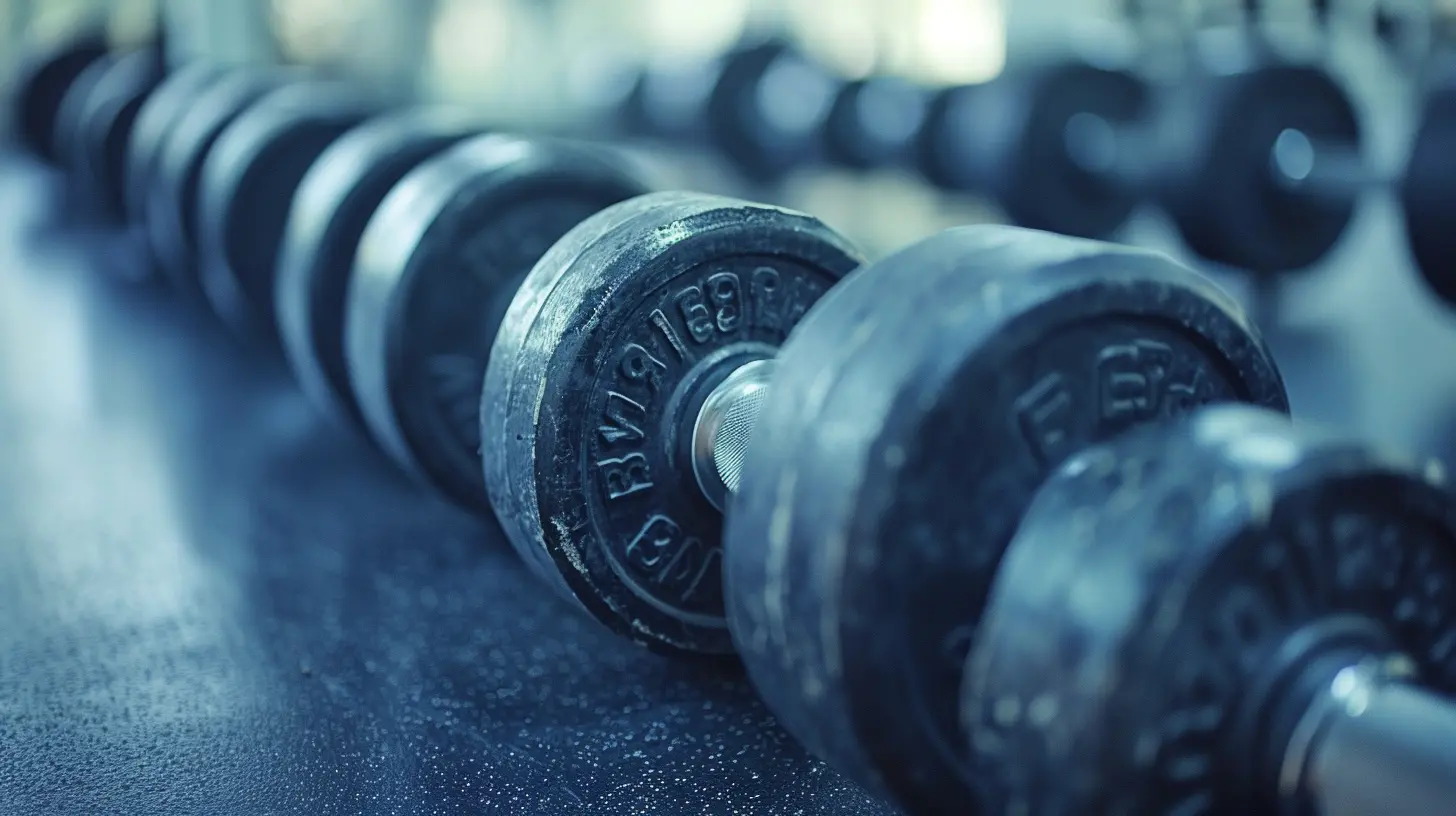The Best Warm-Up Routines to Prevent Injuries
2 November 2025
Let’s get honest for a second — how many times have you skipped your warm-up because you were short on time or just wanted to dive right into your workout? We've all been there. But what if I told you that those first 10-15 minutes can be the make-or-break factor for your performance and injury prevention?
Warming up isn't just a box to check off. It’s your body’s wake-up call. Think of it as the coffee your muscles need before they start lifting, running, jumping, or playing. In this guide, we’ll dive into the absolute best warm-up routines to prevent injuries — the kind that professional athletes swear by and your future self will thank you for.
Whether you’re a weekend warrior, gym rat, or someone who's just starting their fitness journey, this warm-up wisdom is for you.
Why Warm-Ups Matter More Than You Think
Before jumping into routines, let’s wrap our heads around the “why.” Why does warming up matter?Imagine trying to stretch a cold rubber band. It’s tight, not very flexible, and snaps easily. But if you warm it up? It stretches smoothly with a lower chance of breaking. Your muscles behave the same way.
A proper warm-up:
- Increases body temperature and blood flow to muscles
- Improves flexibility and range of motion
- Primes your nervous system for coordination and balance
- Mentally prepares you for the activity ahead
- Significantly reduces the risk of strains, sprains, and other injuries
So, skipping it isn't just lazy — it’s risky.
The Anatomy of the Perfect Warm-Up
A warm-up isn’t just doing a few arm swings and touching your toes for a few seconds. A solid routine has structure and intention. Here's how you want to break it down:1. General Warm-up (5-10 minutes)
2. Dynamic Stretching (5-8 minutes)
3. Activity-Specific Movements (3-5 minutes)
Let’s break these down step by step.
1. General Warm-Up: Get That Heart Pumping
The goal here is simple — get your blood flowing and increase your core temperature. This isn’t the time to go all-out; think low-intensity, steady movement.Great General Warm-Up Activities:
- Brisk walking or light jogging- Jumping jacks
- High knees (low intensity)
- Stationary biking
- Jump rope (easy pace)
Spend about 5–10 minutes here. You want to feel a light sweat and a noticeable increase in heart rate. Once that happens, you’re ready for the next phase.
(Still sitting on the bench? Hop up — your muscles are calling.)
2. Dynamic Stretching: Wake Up Those Joints
Now that your body is moving, it’s time to loosen up with dynamic stretches — NOT static ones. Static stretches (like touching your toes and holding) come after a workout. Beforehand, we want motion-based movement to prime the body.Best Dynamic Stretching Exercises:
- Leg swings (front-to-back and side-to-side): Loosen up hips and hamstrings.- Arm circles: Start small and gradually increase the diameter.
- Walking lunges: Great for glutes, hamstrings, and quads.
- Hip circles: Open up your range of motion.
- Inchworms: Stretch hamstrings and activate your core.
- Butt kicks and high knees: Engage the posterior and anterior chains.
Spend 30–60 seconds per movement. Perform with control and full range of motion — this is not a race.
Think of this stage like tuning your car before a long drive. You’re fine-tuning the engine to avoid break-downs later.
3. Activity-Specific Warm-Up: Get Into Character
This is where your warm-up meets your workout. Tailoring the last few minutes to mimic the movements you're about to perform helps activate the specific muscle groups you'll use and preps your nervous system.Examples:
- Running? Do strides, A-skips, and bounding.- Lifting weights? Do bodyweight squats, light barbell sets, or resistance band rows.
- Playing basketball? Add lateral shuffles, quick cuts, or shooting drills.
- Cycling? Do a few high-cadence sprints with low resistance.
The idea is to bridge the gap between warming up and going full throttle. Give your muscles a sneak peek of what’s coming. No surprises = fewer injuries.
Warm-Up Routines by Sport and Activity
Different sports, different demands. Let’s break it down further.🏃 Warm-Up for Runners
- 5-min light jog- Leg swings (10 front-to-back, 10 side-to-side)
- Walking lunges — 10 each side
- Butt kicks — 20 seconds
- High knees — 20 seconds
- A-skips — 2 sets of 20 yards
- 3 x 50-yard strides (gradually increase speed)
This gets your hips, knees, and ankles all in sync — key areas that take loads of impact when running.
🏋️ Warm-Up for Weightlifters
- 3–5 minutes of rowing or cycling- Arm circles (both directions) — 30 sec each
- Bodyweight squats — 2 x 10 reps
- Hip bridges — 2 x 10 reps
- Resistance band rows — 2 x 15 reps
- Barbell warm-up sets (start with just the bar)
Weightlifting is all about controlled power. A solid warm-up ensures you’re lifting with the right muscles and not putting extra stress on your joints.
⚽ Warm-Up for Field Athletes (Soccer, Football)
- Light jog with direction changes — 5 min- Leg swings and hip openers
- Side lunges — 2 x 10 reps
- Ladder drills — 2 rounds
- Short sprints — 3 x 15 meters
- Quick feet drills or cone drills
Field sports require agility, reaction time, and explosive movement. Warming up these elements before the game keeps you fast and safe from muscle pulls.
🧘 Warm-Up for Yoga or Pilates
- Cat-cow stretches — 5 rounds- Downward dog to cobra flow — 5 reps
- Gentle spinal twists sitting down
- Arm reaches with side bends
- Hip circles sitting or standing
Even in slower-paced practices like yoga, warming up improves joint mobility and minimizes strain during more intense poses.
Common Warm-Up Mistakes to Avoid
Warm-ups are simple, but there are a few traps you’ll want to steer clear of:- Skipping dynamic movements: Static stretching doesn't wake up your muscles — it puts them to sleep.
- Going too hard too soon: This isn't your main workout. Don’t turn your warm-up into a sprint session.
- Not warming up at all: C’mon, you know better now.
- Repetition with no progression: Your warm-up should gradually build in intensity.
Remember, warming up is like texting before calling — it smooths the communication between your brain and body. Don’t skip the small talk.
How Long Should Your Warm-Up Be?
In general, 10–15 minutes is the sweet spot. You want to reach a point where your body feels ready — not tired, but activated and agile.If it’s a lighter workout day, 5–10 minutes might cut it. But if you’re going heavy or playing a high-intensity sport? Give yourself a bit more time.
Your warm-up should feel like the pre-game party, not the afterparty hangover.
Be Consistent, Reap the Rewards
The best athletes in the world don’t skip warm-ups. Why? Because they know that performance and longevity go hand in hand. Injuries don’t just set you back physically — they mess with your mindset, motivation, and progress.So, make warming up non-negotiable. Just like brushing your teeth or charging your phone. It’s not extra — it’s essential.
Stay consistent, stay injury-free, and your body will do what it does best: move like a champ.
Final Thoughts: Warm Up Like You Mean It
Warming up isn’t glamorous, and it doesn’t look cool on social media. But it’s the secret sauce to staying injury-free, feeling better during your workouts, and bouncing back faster.So next time you hear that little voice telling you to “just skip it,” remember this — a few minutes of smart movement now can save you from weeks (or months) of painful recovery later.
You only get one body. Treat it right from the moment you step into the gym, the court, or the field.
Now, go warm up like you mean it
all images in this post were generated using AI tools
Category:
Gym TrainingAuthor:

Preston Wilkins
Discussion
rate this article
1 comments
Mackenzie McIntire
Great article! Proper warm-up routines are crucial for injury prevention and enhancing performance. I appreciate the detailed recommendations, especially the emphasis on dynamic stretches. These insights will certainly help athletes at all levels stay safe and get the most out of their training.
November 11, 2025 at 1:43 PM

Preston Wilkins
Thank you for your thoughtful feedback! I'm glad you found the recommendations helpful for injury prevention and performance enhancement. Happy training!


